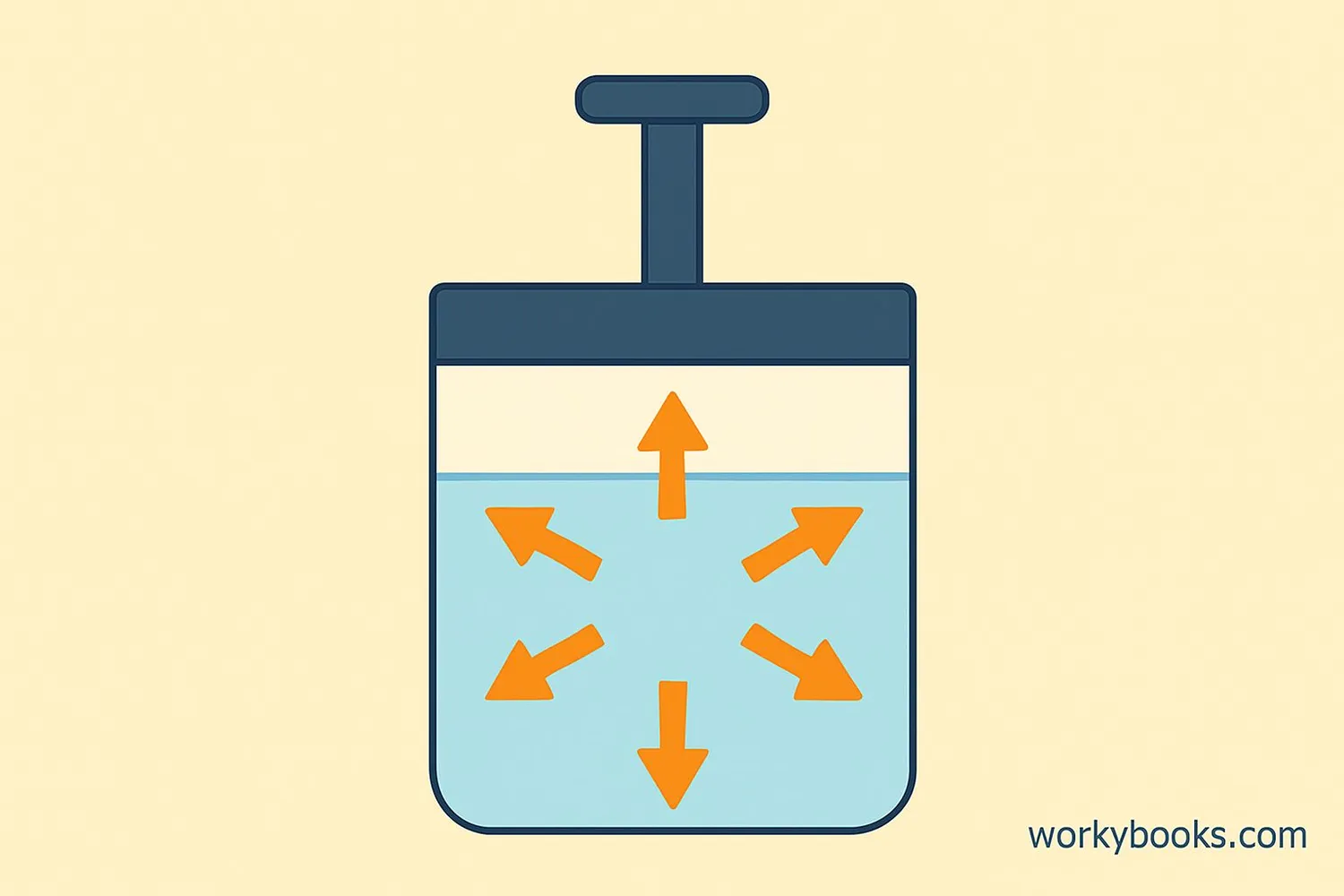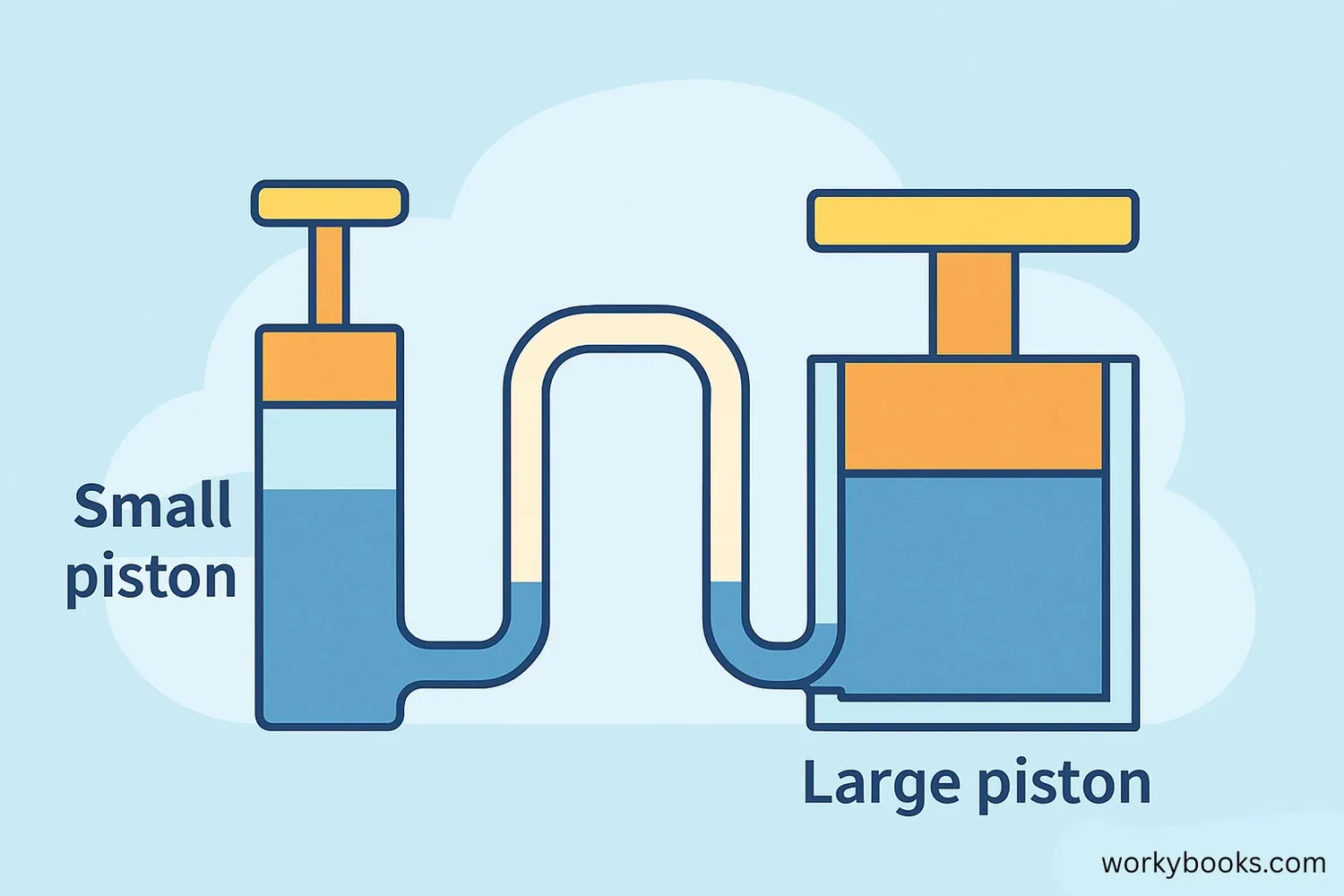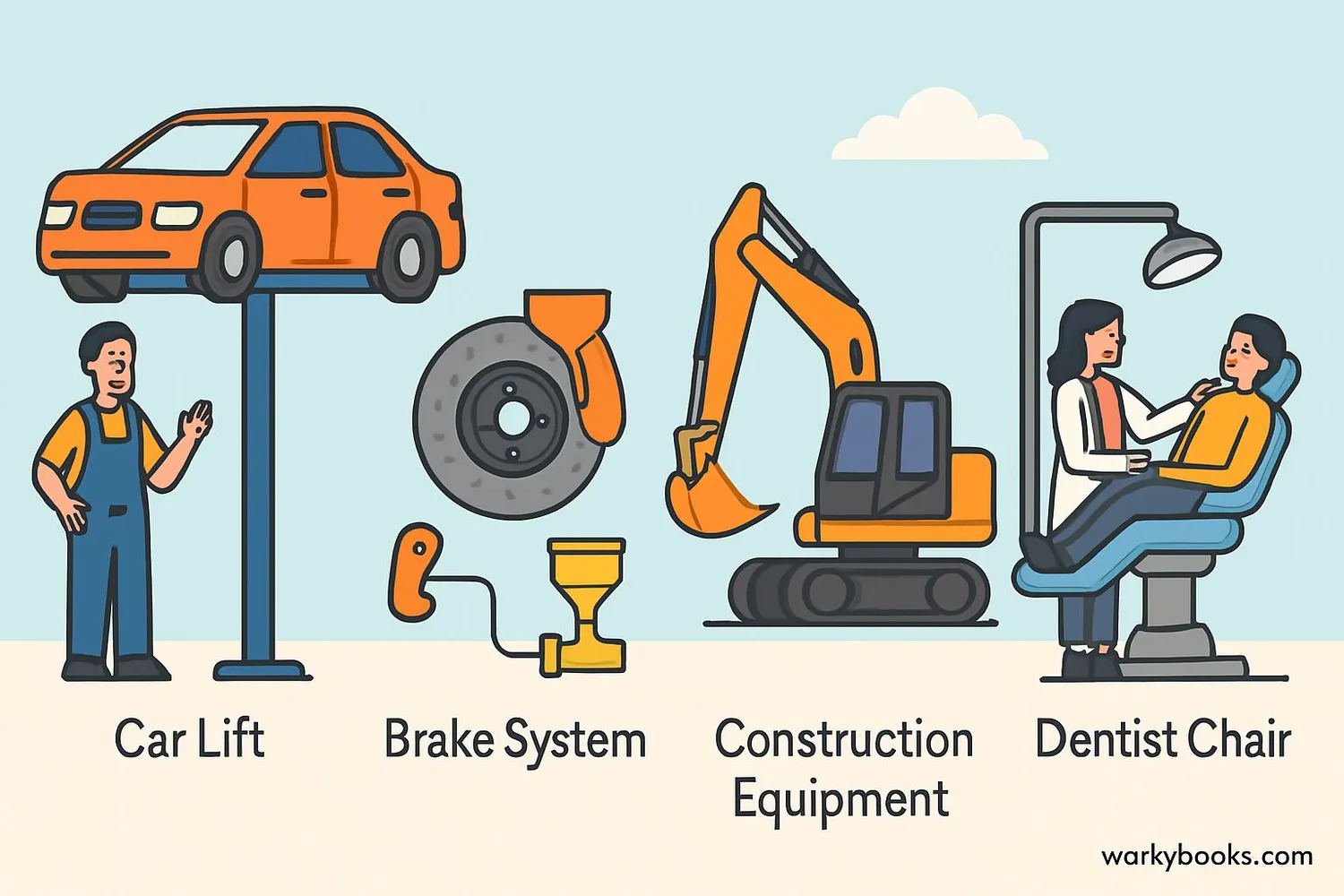Pascal's Principle - Definition, Examples, Quiz, FAQ, Trivia
Discover how pressure works in fluids and powers amazing machines!
What is Pascal's Principle?

Pascal's Principle is a fundamental law in fluid mechanics discovered by the French scientist Blaise Pascal. It states that:
"Pressure applied to an enclosed fluid is transmitted undiminished to every portion of the fluid and to the walls of its container."
This means when you push on a fluid in a closed container, that pressure spreads equally throughout the entire fluid. It's like squeezing a toothpaste tube - the pressure you apply at the end travels through the toothpaste and comes out the opening!
Key Fact!
Pascal's Principle explains how small forces can create big movements in hydraulic systems!
How Pascal's Principle Works

Pascal's Principle makes hydraulics possible! Here's how it works:
Force Applied
A small force is applied to a small piston
Pressure Created
This creates pressure in the fluid
Pressure Transmitted
Pressure transmits equally through the fluid
Force Multiplied
Pressure creates larger force on bigger piston
Work Done
The larger piston moves heavy objects
The magic happens because pressure equals force divided by area (P = F/A). When pressure stays the same:
Small force on small area → Large force on large area
This is how a small push can lift a heavy car at the mechanic's shop!
Force Multiplier!
Hydraulic systems can multiply force hundreds of times using Pascal's Principle!
Real-World Applications

Pascal's Principle powers many machines we use every day:
Car Brakes
Small pedal force creates big stopping power
Hydraulic Lifts
Mechanics lift heavy cars with minimal effort
Construction Equipment
Excavators and cranes move massive loads
Dentist Chairs
Smooth height adjustment for patient comfort
Medical Equipment
Precise control in surgical tools
Hydraulic systems using Pascal's Principle are everywhere because they:
• Multiply force effectively
• Provide smooth, precise control
• Work with minimal mechanical parts
• Transfer power efficiently over distances
Pascal's Principle Quiz
Test your understanding with this interactive quiz! Answer all 5 questions to see how much you've learned.
Frequently Asked Questions
Here are answers to common questions about Pascal's Principle:
Pascal's Principle Trivia
Discover fascinating facts about fluid pressure and hydraulics!
Historical Origins
Blaise Pascal discovered his principle in 1653 and confirmed it using a barrel filled with water. When he added water to a thin vertical tube, the increased pressure burst the barrel!
Engineering Marvels
The world's largest hydraulic press can generate 80,000 tons of force - enough to lift 50 space shuttles! These massive machines shape airplane wings and car frames.
Nature's Hydraulics
Spiders use hydraulic pressure to extend their legs! They pump body fluid into their legs to straighten them, then use muscles to bend them back.
Space Applications
NASA uses hydraulic systems in rocket launch platforms. These systems slowly tilt rockets upright before launch using Pascal's Principle.


